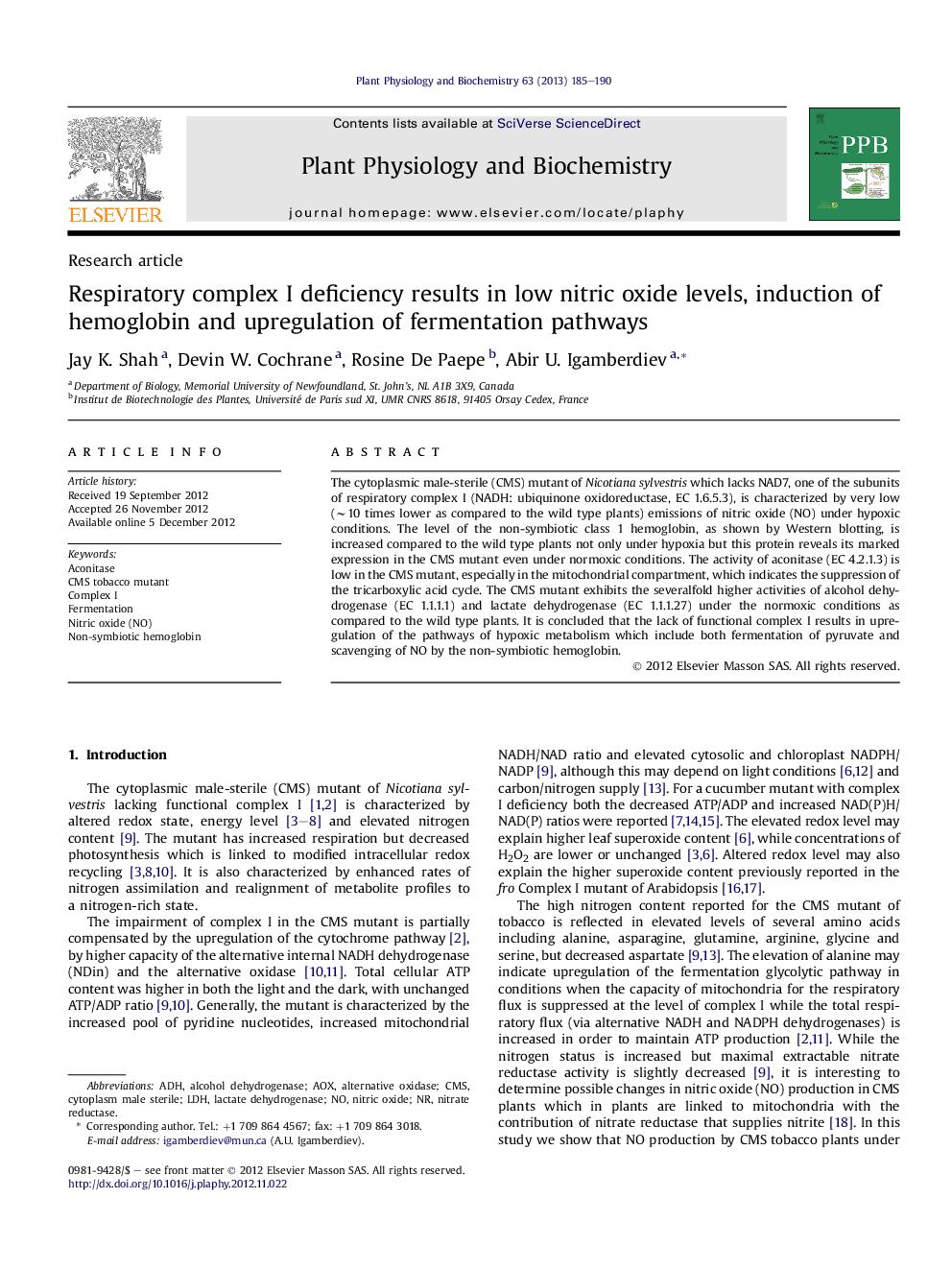| Article ID | Journal | Published Year | Pages | File Type |
|---|---|---|---|---|
| 2016062 | Plant Physiology and Biochemistry | 2013 | 6 Pages |
The cytoplasmic male-sterile (CMS) mutant of Nicotiana sylvestris which lacks NAD7, one of the subunits of respiratory complex I (NADH: ubiquinone oxidoreductase, EC 1.6.5.3), is characterized by very low (∼10 times lower as compared to the wild type plants) emissions of nitric oxide (NO) under hypoxic conditions. The level of the non-symbiotic class 1 hemoglobin, as shown by Western blotting, is increased compared to the wild type plants not only under hypoxia but this protein reveals its marked expression in the CMS mutant even under normoxic conditions. The activity of aconitase (EC 4.2.1.3) is low in the CMS mutant, especially in the mitochondrial compartment, which indicates the suppression of the tricarboxylic acid cycle. The CMS mutant exhibits the severalfold higher activities of alcohol dehydrogenase (EC 1.1.1.1) and lactate dehydrogenase (EC 1.1.1.27) under the normoxic conditions as compared to the wild type plants. It is concluded that the lack of functional complex I results in upregulation of the pathways of hypoxic metabolism which include both fermentation of pyruvate and scavenging of NO by the non-symbiotic hemoglobin.
► Tobacco CMS mutant lacking respiratory complex I shows a decreased NO production. ► Hemoglobin level in CMS plants is elevated not only in hypoxia but also in normoxia. ► CMS mutant has very low aconitase activity in mitochondria. ► CMS mutant exhibits elevated levels of alcohol and lactate dehydrogenase. ► Lack of functional complex I upregulates pathways of hypoxic metabolism.
